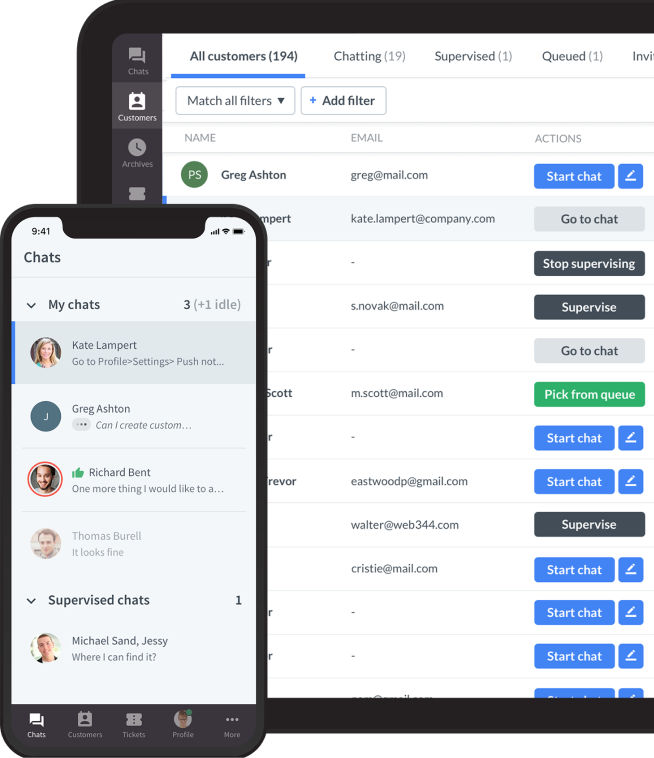
When getting customer service help, how often do you hear the phrase, “Sorry for the inconvenience”? Does it actually make you feel better, or does it just make you roll your eyes?
Probably the latter.
There’s something about that line. It’s overused and so vague it barely qualifies as an apology. If you’ve ever received it after waiting days for a package, sitting on hold for an hour, or getting shuffled between agents, you know it doesn’t do much.
And if you’re on the other end, typing it out to frustrated customers, you probably know it’s not enough, either. It’s time to rewrite the script.
In this article, you’ll learn:
- Why good customer service is one of the biggest drivers of loyalty, retention, and brand growth in 2025
- How quality support shapes the customer trust and influences what people say about your brand after the chat ends
- What makes great service a competitive advantage, even more powerful than pricing or product
- How exceptional service leads to repeat purchases and higher customer lifetime value
- How to build a service experience that not only solves problems, but actively fuels business growth
Let’s take it from the top.
Why “sorry for the inconvenience” is poor customer service
Let’s face it, “sorry for the inconvenience” has become the elevator music of customer service: bland, generic, and painfully forgettable.
It’s a phrase so overused it’s lost all emotional weight, especially when customers are genuinely upset. Imagine spending an hour on hold only to be met with a flat “Sorry for the inconvenience.” Or having your account mistakenly suspended and receiving the same apology. It doesn’t just fall flat, but feels dismissive.
Why do customers dislike the phrase 'sorry for the inconvenience'?
- It doesn’t acknowledge the actual problem.
- It feels like a default script, not a personal response.
- It fails to show you understand the customer’s emotions.
Let’s get into the details. First, it completely glosses over what went wrong. It skips the specifics of the situation and rushes to wrap things up. For example, if a customer experiences a three-day delay on a time-sensitive order, replying with “sorry for the inconvenience” ignores the real-world consequences. Maybe they missed a birthday, an important event, or a business opportunity. What they want isn’t a generic gesture; they want validation.
And data backs this up. A study by the Nottingham School of Economics found that 45% of customers withdrew negative feedback after receiving a heartfelt apology, compared to just 23% who did so when offered monetary compensation. This shows that sincere apologies can be more effective than cash in restoring trust.
In other words, a sincere “I’m sorry” is worth more than a discount code.
But when apologies are vague or scripted, the opposite happens. Research shows that generic phrases reduce perceived sincerity, and repeated use of phrases like “sorry for the inconvenience” can actually lead to trust erosion, especially in live chat or email, where tone and nuance are already limited. Customers are quick to recognize when they're being handled instead of heard.
That’s why the phrase often widens the emotional gap rather than bridging it. It fails to convey real empathy. A better approach would be something like:
“I understand how frustrating this delay must be, we missed the mark here, and I’m truly sorry about that.”
That small shift in language makes a huge difference in tone, accountability, and customer perception.
In short, the old standby doesn’t earn you points; it costs you credibility. If you want to retain customers and build loyalty, it’s time to retire the script and start speaking like a human who actually cares.
Understanding what customers actually want to hear
A real apology isn’t just about saying “we’re sorry for the inconvenience.” In fact, that’s usually the least important part. When something goes wrong in a customer interaction, what people truly want is to feel reassured that they won’t be left hanging.
A good apology isn’t about defending your brand, but about showing up like a human and owning the moment.
Start with empathy to apologize sincerely
Every effective apology begins with empathy. Customers want to know that you understand how the issue impacted them, not just logistically but emotionally. Maybe their package didn’t arrive before an important event, or your app crashed during a critical moment in their workday.
Simply saying “we are sorry for the inconvenience” doesn’t cut it.
What does empathy sound like? Try this:
“I completely understand how frustrating it must have been to wait for your order without updates. That’s not the experience we want you to have.”
It’s specific, it’s human, and it lets the customer know you’re not treating them like Ticket #1839.
This isn’t just feel-good fluff, either. According to PwC, 59% of consumers say companies have lost touch with the human element of customer experience. Leading with empathy is how you regain it.
Acknowledge the mistake directly
Customers can sniff out deflection instantly. Lines like “We’re experiencing some technical difficulties” or "We're sorry for the inconvenience" sound like dodges. If your customer support team made a mistake, own it. Accountability builds trust faster than polished PR statements ever will.
Try something more honest:
“We made a mistake on our end while processing your request, and we take full responsibility for the delay.”
There will be no finger-pointing or vague excuses. There will be just clarity and ownership, two things every frustrated customer hopes for.
Explain the action you’re taking
Empathy and acknowledgment set the tone, but unhappy customers also want to know: What are you actually doing to fix this? A real apology includes action, ideally something concrete they can hold onto.
This doesn’t have to be complicated. A simple line like below shows urgency, responsibility, and that you’re actively working to make things right.
“We’ve escalated your case and you’ll hear back from our resolution team within two hours.”
Remember, vague phrases like “We’ll look into it” often add fuel to the fire. Be specific.
Give a clear resolution for the inconvenience caused
At the end of the day, what the customer wants is closure. That might be a replacement, a refund, an update, or even just confirmation that the issue won’t happen again. The key is to be clear, helpful, and fast.
For example:
“We’ve re-shipped your item with express delivery and waived the shipping fee. You should receive it by tomorrow.”
A Harvard Business Review analysis shows that when companies resolve customer problems quickly and efficiently, minimizing customer effort, the likelihood of repeat business increases significantly.
Resolution isn’t just a box to check; it's a true loyalty builder.
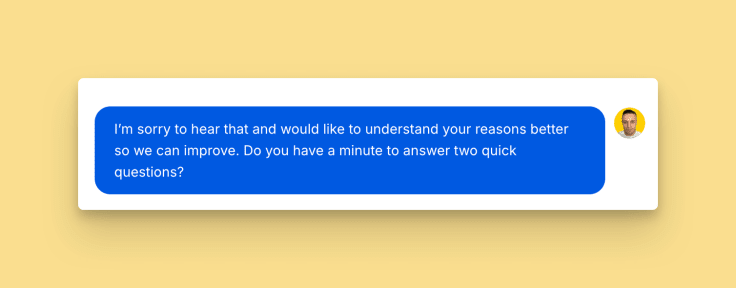
10 alternative phrases to “sorry for the inconvenience” (and why they fix things)
“Sorry for the inconvenience” might check the box, but it rarely checks the heart. Customers want sincerity, not scripted replies. In fact, a field experiment conducted by the Nottingham School of Economics revealed that customers were more than twice as likely to forgive a company that offered a simple apology than one that offered cash compensation. This finding underscores the greater behavioral effectiveness of sincere apologies over monetary offers.
So the trick is saying something that sounds like a human, not a template.
Here are 11 stronger alternatives that follow the four key principles of an effective and sincere apology: empathy, acknowledgment, action, and resolution.
They include commentary and examples you can steal today.
1. “I understand your frustration, and I’m here to help.”
It shows you’re paying attention to how the customer feels, not just what went wrong. This phrase immediately communicates emotional intelligence and makes the recipient feel heard.
Remember that the customer is clearly upset or venting. Maybe they’ve waited too long or received a product that didn’t meet expectations. This line helps ground the conversation before jumping into a swift resolution.
Example:
“I understand your frustration with the repeated login issues, and I’m here to get this resolved right away.”
2. “We deeply regret the trouble this caused.”
Genuine regret adds emotional weight, making the apology feel more heartfelt. It doesn’t sound scripted. but like a real person who understands that the customer was inconvenienced in a meaningful way.
After all, our mistake caused delays, disruptions, or extra work on the customer’s part, like having to reschedule a service or chase down an issue more than once.
Example:
“We deeply regret the trouble delayed delivery has caused. We’ve expedited your order and will update you shortly.
3. “I can see why this would be upsetting. Let’s make it right.”
It is a better way to say than "sorry for the inconvenience" as it balances gratitude and accountability. You’re acknowledging that the customer waited and that the issue isn’t something they should have had to deal with in the first place.
Here, you’ve resolved the problem but want to close on a note of humility. This is especially useful for longer wait times, repeated follow-ups, or delayed responses.
Example:
“I can see why being double-billed would be upsetting. Let’s make this right, we’ve issued a refund and flagged your account.”
4. “We sincerely apologize for the delay and appreciate your understanding.”
This is respectful and polished. It recognizes the issue and shows that you value the customer’s patience without being overly casual or robotic.
Imagine there’s been a delay, whether in shipping, responses, or processing, but the situation is now back on track. This is a good formal alternative for B2B conversations.
Example:
“We sincerely apologize for the delay in processing your refund and appreciate your understanding while we speed this up.”
5. “I’m really sorry we let you down. Here’s what we’re doing about it.”
It’s a powerful mix of vulnerability and accountability. You acknowledge that you didn’t meet expectations and take steps to fix it.
Here, the customer expected something specific, like a promised feature, deadline, or service level, and you didn’t deliver. This phrase is key to rebuilding trust.
Example:
“I’m really sorry we let you down by missing your service appointment. Here’s what we’re doing to prevent it from happening again…”
6. “That’s our fault, and we’re already working on a solution.”
This cuts through the fluff and gets straight to the point. There is no dodging, no excuses, just full ownership and visible action.
It’s clearly a mistake on your side. Maybe you shipped the wrong product or caused an account error. A line like this helps avoid escalating tension,
Example:
“That’s our fault, we shipped the wrong item. A replacement is already on its way, and you’ll receive it tomorrow.”
7. “This wasn’t the experience we intended, and we take full responsibility.”
These alternatives to “sorry for the inconvenience caused” zoom out to reflect on the overall customer journey, not just the one issue. It’s thoughtful, professional, and shows a company-level commitment to doing better.
The customer feels let down by more than a single error. This could include a clunky onboarding process, multiple small problems, or a poor service experience.
Example:
“This wasn’t the experience we intended during your onboarding, and we take full responsibility. Let’s work together to fix it.”
8. “You’re absolutely right, we missed the mark here.”
It validates the customer’s complaint and shows humility. Admitting fault without defensiveness often diffuses anger and invites constructive dialogue.
The customer is pointing out a legitimate issue you hadn’t seen, or calling out something your team overlooked. It’s a great way to show that you’re listening, not debating.
Example:
“You’re absolutely right, we missed the mark on your support request. We’ve reviewed it, and here’s what’s changing moving forward.”
9. “Please accept our sincerest apologies for the issue.”
It’s formal and respectful, which is ideal for higher-stakes conversations. It adds a tone of professionalism without sounding cold.
You’re dealing with escalated customer concerns, VIP customers, or formal written communications where tone matters a lot.
Example:
“Please accept our sincerest apologies for the repeated billing errors. A full audit of your account is underway.”
10. “We’re doing everything we can to prevent this from happening again.”
Customers want to know that their pain wasn’t for nothing. This line reassures them that you’re learning from the mistake, not just fixing it in the moment.
The issue has happened more than once or stems from a systemic problem, such as bugs, outages, or service downtime. It shows that you’re thinking long-term.
Example:
“We’re doing everything we can to prevent these delivery delays from happening again
Turning mistakes into opportunities
It might sound counterintuitive, but a well-handled mistake can actually leave your customer more satisfied than if nothing had gone wrong at all. Studies show that a 5% increase in customer retention can boost profits by up to 95%, and one of the most effective ways to retain a frustrated customer is to offer a heartfelt, sincere apology.
When something goes wrong, your response becomes the moment that defines your brand, not the mistake itself. A genuine apology that focuses on how the issue impacted the customer, not just company regret, can humanize your brand, restore trust, and even turn an annoyed user into a loyal advocate.
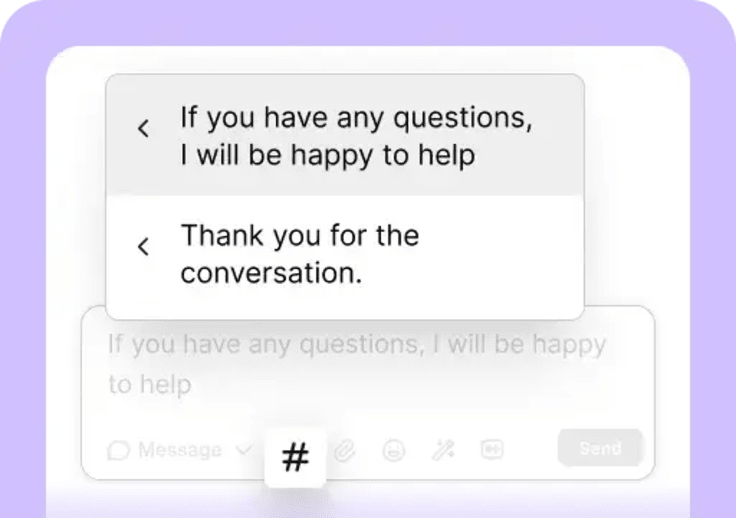
Consider this simple line:
“I know this delay may have disrupted your day. We’re really sorry for the trouble, it’s being resolved now.”
A well-known example comes from JetBlue’s 2007 Valentine’s Day crisis, when thousands of passengers were stranded due to a storm and operational breakdown.
Instead of hiding, the CEO went public with an apology, took responsibility, and released a customer bill of rights, including compensation. The backlash turned into brand loyalty, and JetBlue’s reputation for customer care actually grew. Mistakes happen, and they don’t have to break trust; they can build it if your team knows how to lead with empathy, transparency, and real accountability.
Why does avoiding the dull phrase "sorry for the inconvenience" and acknowledging the mistake work?
- It shows empathy, not just obligationCustomers don’t want to hear boilerplate apologies. They want to feel understood.
- It lowers frustrationAcknowledging the inconvenience helps customers feel validated, reducing the chance they’ll escalate the issue.
- It builds an emotional connectionWhen you mirror a customer’s feelings, you’re not just solving a problem; you’re strengthening the relationship.
- It sets the tone for the resolutionWhen you lead with empathy, the rest of your support feels more thoughtful and trustworthy.
When handling a service issue or delay, a simple yet effective three-step formula can help maintain trust and reassure the customer.
Building a culture of empathy in customer experience
In an age where customers expect fast and emotionally intelligent responses, customer support teams must go beyond scripts and start connecting on a human level.
Creating a culture of empathy starts with what and how you train your customer service agents.
Spotting emotional cues
One of the most important skills a support agent can develop is the ability to identify emotional cues in a customer’s message. Whether it’s subtle disappointment or full-blown frustration, being able to recognize these signals is the first step to responding meaningfully.
For example, a message like “I’ve already contacted you twice about this and still haven’t gotten a simple solution” isn’t just a status update; it’s a signal of rising frustration. A generic reply like “Thanks for reaching out; we’re looking into it” is likely to pour gasoline on the fire.
Instead, a response such as below acknowledges the emotional weight and sets the right tone.
“I see this has already taken more of your time than it should have. I’m really sorry about the delay, let’s get this fixed now.”
Context is everything
No two customer issues are exactly the same, so no two apologies should be either. A one-size-fits-all response might be fast, but it doesn’t make a customer feel understood. Effective teams are trained to ask: What’s the context? How did this impact the customer personally?
Let’s say two customers report a missed delivery. One needed the item for a birthday gift. The other is for a client meeting. Instead of replying, “Sorry for the inconvenience,” consider personalized messages like:
- “I’m really sorry this gift didn’t arrive in time for the birthday celebration. That’s frustrating, we’re already reshipping it with priority handling.”
- “I understand how this delay may have impacted your client meeting. Let’s make sure we get this to you ASAP and avoid further concerns.”
This kind of tailored and proactive approach builds trust and shows your team is listening, not just responding.
Avoiding robotic language and negative impact
Too many support interactions fall flat because they sound like a machine. While templates and macros save time, they often strip away personality. That’s why support teams must learn to ditch robotic phrasing in favor of real, human language.
Compare these two replies:
- Robotic: “We are sorry for the inconvenience you have experienced.”
- Empathetic: “I’m really sorry we let you down here; this wasn’t the experience you should’ve had.”
The difference? One sounds like a policy. The other sounds like a person.
Fun fact: In a survey by Gladly, 84% of customers said being treated like a person, not a case number, was key to winning their business.
Using smart tools to scale empathy
Of course, in high-volume support environments, writing unique responses for every case can be tough. That’s where smart tools, like LiveChat’s AI-enhanced suggestions, come in.
This feature analyzes the customer’s tone in real time and recommends phrasing that matches their emotional state. If someone sounds frustrated, it may suggest something more empathetic. If they’re neutral, it may lean more informative.
This helps support agents stay emotionally in sync with the customer, without overthinking every line.
The result? Conversations feel more personal, even at scale.
Example in action:
A LiveChat agent receives a message: “I’ve been waiting for a refund for over a week, what’s going on?”
LiveChat might suggest:
“I completely understand why this wait has been frustrating. I’ve looked into it, and here’s what’s happening…”
This small adjustment makes the interaction feel human and builds rapport instantly.
How LiveChat helps teams elevate their apologies
While choosing the right words is crucial, even the best apology falls flat if it’s delayed, disconnected, or buried in workflow chaos. That includes avoiding overused phrases like “sorry for the inconvenience,” which can come off as insincere or dismissive when empathy is needed most. That’s where LiveChat comes in.
Beyond a messaging tool, LiveChat provides the infrastructure support teams need to deliver fast, empathetic, and effective communication without friction or forgetfulness.
With the right features in place, your customer service team can shift its energy away from typing repetitive replies and toward doing what matters most: being human.
Canned responses with a personal touch
LiveChat’s canned responses aren’t your average copy-paste snippets. They’re designed to be instantly editable and context-aware, allowing agents to drop in a structured reply and quickly tailor it to the customer’s situation.
For instance, instead of typing out “I’m really sorry for the inconvenience and the delay” ten times a day, agents can use a saved template like:
“I understand how frustrating this must be. I’ve looked into it, and here’s what we’re doing…”
and then fill in the rest on the fly. It saves time, without sounding like a robot.

Chat archives that maintain continuity
When a customer returns for a follow-up or ends up speaking with a different agent, LiveChat chat archives make it easy to pick up exactly where the conversation left off. Agents can instantly access the entire history of previous chats, including what was promised or what actions were taken.
This eliminates the all-too-common frustration of having to repeat details or re-explain an issue. Instead, agents can respond with empathy and continuity, making the customer feel remembered and respected.
“I see you were already in touch about this last week, and we didn’t resolve it properly, thank you for giving us another chance to fix it.”
It’s a small touch, but it goes a long way in turning a repeat issue into a relationship-building moment. With archived conversations readily available, apologies become smarter, faster, and far more personal.\
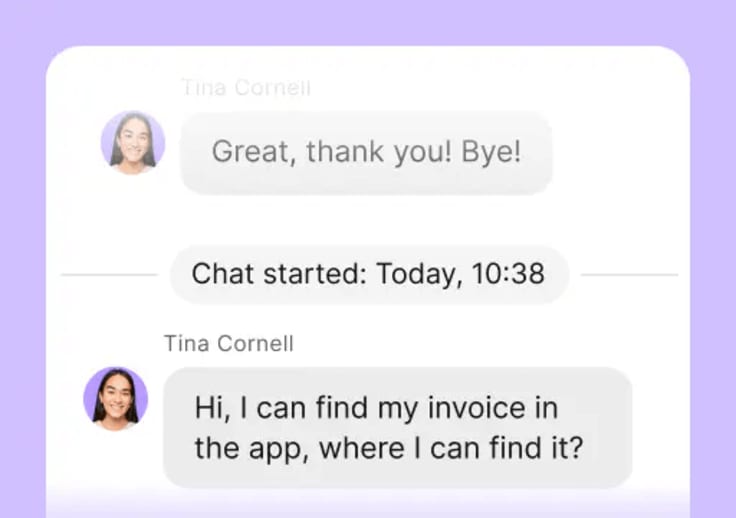
Custom tags for trend-tracking and issue resolution
Apologies aren’t just for the customer, they’re signals for the business.
LiveChat’s custom tags allow teams to categorize conversations by issue type, like “refund request,” “shipping delay,” or “billing errors.”
These tags help managers analyze trends over time, identify recurring pain points, and track how quickly technical issues are being resolved. This data can inform apology templates, workflow changes, and even product improvements.
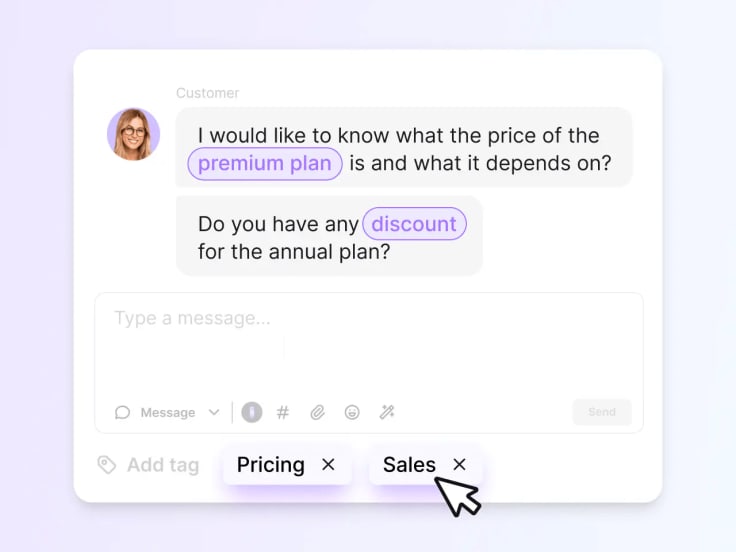
Empathy beats excuses, every time
In customer service, a sincere apology is a strategic advantage.
It tells your customers, “We hear you. We care. And we’re doing something about it.” That kind of honesty doesn’t just resolve issues, it builds trust, secures future business, and sets your brand apart in a world flooded with templated responses and corporate jargon.
So it’s time to retire the lifeless “sorry for the inconvenience.” Customers see through it, and they deserve better. Replace it with words that carry weight. Sincerely apologize. Express regret. And back it up with clear action.
The best part? You don’t have to do it all manually. With tools like LiveChat, your support team can deliver quick, context-aware, emotionally intelligent responses at scale without sacrificing authenticity.
Because at the end of the day, customers aren’t just looking for a resolution. They’re looking to feel heard.

